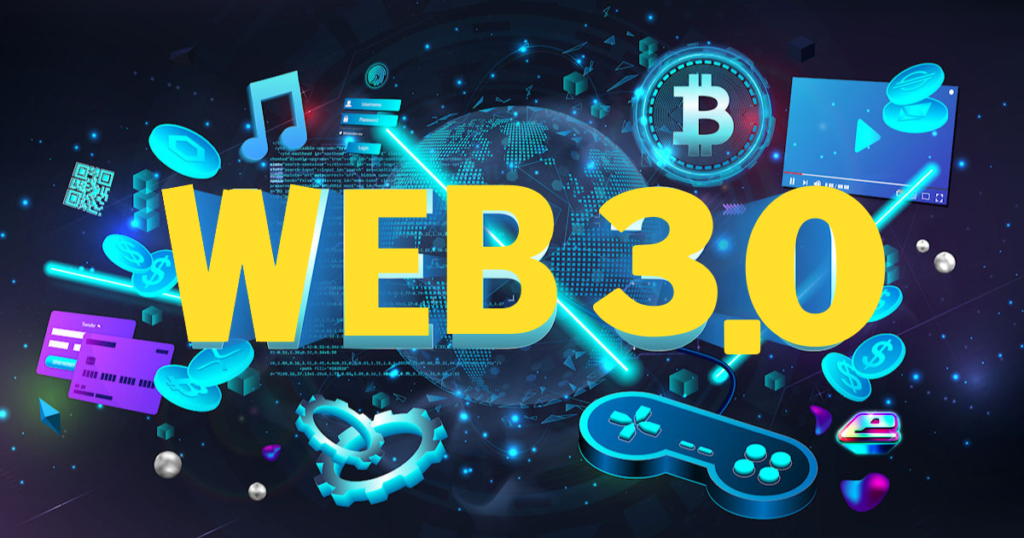Web 3.0 Meaning: Web 3.0 is the next iteration of the internet, one that emphasizes giving users more control over big tech firms. You may have recently heard the term “Web3” also known as “Web 3” or “Web 3.0” being bandied about a lot. It simply refers to the upcoming version of the internet, which supports decentralized protocols and aims to lessen reliance on major tech firms like Youtube, Netflix, and Amazon.
The terms “web 3” and “web 3.0” may have come up in conversation, but if you’re like most people, you probably have no idea what they mean. In this article, I’m going to define web 3.0 or the definition of web3 and we’re going to discuss web 3.0 meaning why it is so important as well as some of its current and future applications.
So web 3 is often referred to as the third iteration of the internet but to understand what that means it might be helpful to first define web 1 and web 2.
Web 1 and Web 2
Roughly from 1991 to 2004, we experienced web one and that was back when the internet was consumed and it was read-only. The internet from about 2004 to the present day is what we know as web 2. Web 2 improved upon web one because in web one we could only read data from the internet but with web 2 we can actually write data to the internet, but because of this a lot of large data companies started to form and their goal was to collect data on the consumers like you and me.
A lot of companies that we think of as tech companies are really just big data companies in disguise. Once these companies collect our data they can then go and sell it to other companies or even use it for targeted advertising. So one of the main drawbacks of web 2 is it created a lot of centralization and has an overall lack of privacy. The reason why a lot of these free services exists is that we as consumers are actually the product and the companies are making money off of our data and now moving on to web3 or web 3.0 meaning.
Web 3.0 Meaning

So earlier we defined it as the third iteration of the web but to add some real meaning to that definition we could say that web 3.0 is focused on fixing some of the problems of web 2 in centralization and lack of privacy. It aims to do that through the use of blockchain technology and decentralization.
Currently, in web 2 a lot of these institutions have complete control over how your data and assets are used. So one of the main appeals of decentralization and web 3.0 is that it redistributes control back into the hand of the consumer. Since web3 is heavily defined by blockchain technology I kind of like to think of it as an umbrella term for anything related to blockchain, crypto, or NFTs.
Now I will explain some of the current and future applications of web 3.0 and I’m not going to get into too much detail with any of these because we have already written many articles about web3 and its use cases as well. So let me know in the comments if there are any specific applications you’d like to know more about.
Web 3 is applied wherever blockchain technology is beneficial for businesses and or consumers. Despite being very much in its infancy one of the biggest current applications of web 3 is in Defi also known as decentralized finance. I hope you understand web 3.0 meaning if not you can read our other articles about web 3.0 in the crypto blog.
What Defi does do?
What Defi does is it uses the power of smart contracts to remove third parties and institutions from financial transactions. This allows people to take out loans or perform peer-to-peer transactions without the need or control of a middleman.
NFT
We’ve also seen NFTs as a current application but the possibilities far exceed what we’ve seen so far. If you’re not familiar with NFTs that stands for a non-fungible token but I just like to think of them as digital assets. Some future applications for web3 technology are definitely going to be in real estate and then supply chain tracking or really anything that requires secure data storage and retrieval. NFTs are also used in blockchain games or play to earn games or P2E games.
There’s also a really high probability that we’re going to use blockchain technology in the future for voting in elections. This would both increase the security and decrease the costs associated with elections dramatically.
What can you do on Web 3.0?
Web 3.0 Meaning, Web3 makes it possible for previously centralized products to adopt decentralized governance structures. You can tokenize things like memes, artwork, social media posts, and even passes to one of Gary Vee’s conferences.
The paradigm shift is well illustrated by the video game industry. Players frequently complain about the bugs programmers add to their favorite video games or how a recent patch changed the balance of their favorite weapon. By using Web3, players can invest in the game and vote on how it should be run. Large Web 2 companies like Meta and Ubisoft, which also use Web 3.0, are developing virtual worlds. Non-fungible tokens NFTs will also significantly aid in the transformation of the gaming industry by enabling players to become the immutable owners of the items they amass.
Criticisms of Web3
The main criticism leveled at Web3 technology is that it falls short of its goals. Ownership of the blockchain network is concentrated in the hands of early adopters and venture capitalists rather than being evenly distributed. Web 3.0 Meaning, Web3 has recently received attention as a result of a public Twitter argument between Block Inc. CEO Jack Dorsey and several venture capitalists.
The criticisms center on the idea of decentralization theatre,” in which blockchain projects are decentralized in theory but not in actuality. Private blockchains, investments backed by venture capital (VC), and decentralized finance (Defi) protocols, in which a small number of people hold control over hundreds of millions of dollars, are examples of decentralization theatre.

Despite the alleged lack of leadership in the community of protocols, there are clear figureheads. The co-founder of Ethereum, Vitalik Buterin, has enormous influence over the network even though he was not involved in its creation, as Izabella Kaminska, the departing editor of the FT blog Alphaville, noted:
In and of himself, Vitalik is a comical and paradoxical phenomenon. Kaminska informed the Crypto Syllabus that the man “operates as a de facto headless system’s spiritual leader while wielding enormous power and influence over the headless system he established and is in charge of.
Things aren’t much better within decentralized finance protocols. There is still a high barrier to entry for building them because creating blockchains seems to be esoteric magic reserved only for the most specialized engineers, voter apathy is pervasive, and they frequently rely on centralized infrastructure.
Related: Top 10 Web 3.0 Crypto coins
Despite its problems, Web3 does have a lot of potentials. Regular users will discover over the course of the next ten years whether it is too idealistic to put into practice.

